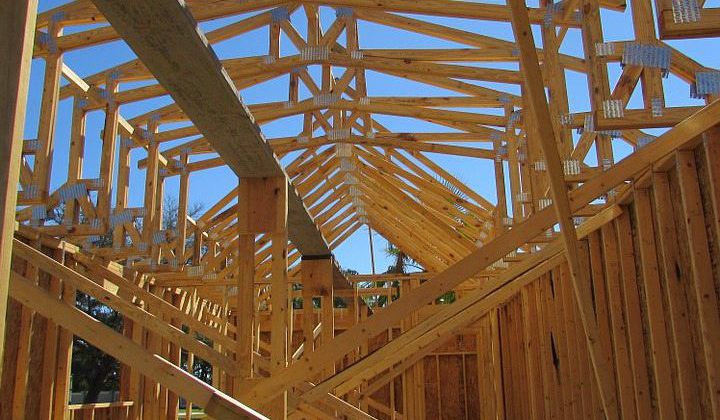A spike in lumber prices is making it even more expensive to build a house.
Vancouver Island Construction Association CEO, Rory Kulmala, says the skyrocketing cost of lumber isn’t just a B.C. issue.
“This is a global crisis,” Kulmala said. “It’s not like we have a regional impact that causes a regional blip to costs, for instance, years ago, we saw a mill catch fire and reduce capacity. We had the mountain pine beetle. That reduced capacity. But we also remember that we have a global market for B.C. timber and there is a global need, particularly in North America for construction materials.”
Kulmala said with a strong commercial and residential market comes a strong demand, “and our capacity just isn’t there.”
He notes that the rising cost of wood is the result of a “confluence of several issues.”
“One is, when COVID hit there was a significant reduction in production capacity, thinking there would be a market collapse for the need,” Kulmala explained. “That went to the contrary. When construction was deemed an essential service, we were privileged to see construction continue. The production was slow to catch up and ultimately, they were never able to meet the demand.”
Nowadays, the cost of things like two-by-fours have more than doubled in price since COVID-19 hit.
“I speak on behalf of the Institutional Commercial and Industrial sector and for the most part, our contractors have been able to manage those increases. Certainly it’s much more of a challenge in the residential market and ultimately those costs are being passed on to the owners.”
He sees prices easing in the future: “As we recover and get back to some state of norm when it comes to our economy, and production and mills meet the demand, we’ll see that that will mitigate costs. (And) as it really becomes a stabilization where the supply gets caught up to the demand and gets closer to the demand, in B.C. we struggled with our wood product industry for many years, often it was undervalued.”
He said now it’s overvalued and believes that “somewhere in the middle that has to be identified and I think over the next six, eight, 12 months, we’ll start to see a correction, particularly around timber and as the supply starts to reach the market, we’ll start to see those costs correct themselves.”
Lumber is a commodity that is traded and is therefore out of government control, Kulmala said: “When you’re trading lumber at $1,400 (or) $1,500 for a thousand board feet, whereas a year ago it was $250, these are traders that are finding and establishing demand. Whether the government can regulate that, I’m concerned, because if the government regulates, it comes with its own challenges and inability to meet markets. We have to be careful of that.”
Where the government can create opportunities, he said, is how they approach other costs that are imposed on a project, particularly with local governments and regulatory requirements, where the regulations are there to protect public safety but sometimes the bureaucracy can be quite costly.”
The high costs of wood products ultimately impacts the home builds the most, according to Kulmala: “Particularly for us, it’s the multi-residential/high rise market or even the residential market. It’s going to impact the homeowner. The cost of lumber on a house today is running anywhere from $20,000 to $40,000 depending on the statistic you look at. That’s ultimately going to go down to the homebuyer and that’s just lumber.”
For commercial and institutional construction, Kulmala said our tax dollars go to a “significant component of our infrastructure.”
“Those tax dollars don’t go as far, so perhaps it means that we can’t do as many projects because the one project the government is focused on doing is over its budget because of costs. I think the government would be intent on doing those projects (and) I think it’s in the public interest to do those projects but maybe they have to do less of them because the capital goal is going to cover escalation costs.”






